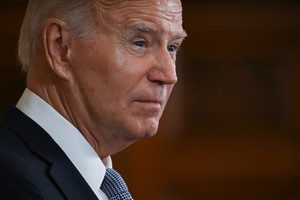Controversy has been raging in the United States around cancel culture, a practice in which institutions are pressured into sanctioning someone who has done or said something that is perceived to be offensive, objectionable, or harmful, either recently or in the past.
Being “canceled” takes many forms. Cancel culture most often involves someone being fired from a job or having their business ties cut, but it can also take the form of the boycotting of a brand, product, or person, the removal of advertising revenue, the removal of a TV show, book, or movie from streaming, broadcast or purchasing platforms, or career consequences such as “deplatforming,” such as disinviting speakers to events, preventing people from speaking at universities and conferences, or getting someone banned from social media.
Starting in June 2020, protesters toppled and/or vandalized dozens of statues and monuments around the United States, including statues of the U.S. founding fathers, Confederate generals, and Union army generals who owned slaves, as well as Christian missionaries, authors and former slaves, and abolitionists. As a result, some cities and organizations voted to remove statues of historical figures. The events sparked widespread debate about history and how controversial statues should be addressed.
AllSides explores multiple stances around the statue removals/topplings and the appropriate course of action to deal with controversial historical monuments.
Are we missing a stance or perspective? Email us!
Stance 1: Tear Them Down, and Destroy Them
These statues glorify racism and hate, and they have been up for far too long. We must tear them down now to have our voices heard and to drive change. We can not wait for government action — too often they appease us with empty promises and then do nothing.
Some arguments for this stance:
- Statues of figures such as Christopher Columbus, George Washington, Thomas Jefferson, Confederate generals and others glorify figures who were colonialist and racist. They owned slaves, condoned slavery, held offensive views, commited violent acts, and/or took land by force and should not be glorified.
- These statues celebrate America’s violent, racist history and condone hate; they have no place on our soil.
- Our statues should be more diverse and inclusive. Public art honors, reveres, and holds up these figures as icons and something to aspire to, yet these statues are symbols of white supremacy.
- Direct action, like tearing down a statue, is a valid and justified way to be heard and affect change in an unjust system that glorifies slave owners and colonialists.
- Talk is cheap, we need action now.
Back to Top ^
Stance 2: Tear Them Down, and Put Them in Museums
These statues glorify racism and hate, and they have been up for far too long. We must take them down now to have our voices heard and to drive change. We should put these statues in museums in order to warn against the evils of the past.
Some arguments for this stance:
- Offensive statues should be placed in museums to remind us and warn against the horrors they represent, not kept in the public sphere.
- Statues of figures such as Christopher Columbus, George Washington, Thomas Jefferson, Confederate generals and others glorify figures who were colonialist and racist. They owned slaves, condoned slavery, held offensive views, commited violent acts, and/or took land by force and should not be glorified.
- These statues celebrate America’s violent, racist history and condone hate; they have no place on public soil.
- Our statues should be more diverse and inclusive. Public art honors, reveres, and holds up these figures as icons and something to aspire to, yet these statues are symbols of white supremacy.
Back to Top ^
Discuss and Deliberate Calmly, and Be Tolerant of Direct Action
As a society we should discuss, deliberate, and decide which statues to take down. We should also show respect for the frustration of those who tear down or vandalize statues; illegal activity is sometimes undertaken by those who feel they aren’t heard.
Some arguments for this stance:
- Some statues represent people who held views that are offensive to certain groups, and we should hear out these groups and consider which statues should be removed.
- Some statues should go, and others should stay.
- We should be discerning about which statues and monuments are worthy of a place in modern America, and have an even-handed discussion about it.
- The fact that some statues have been voluntarily removed by cities, not toppled by protesters, shows civil discourse and even-handed consideration of all perspectives can affect change.
- Civil discourse followed by a public referendum or vote is a better route to change than direct action, which shuts out the voices of those who may disagree.
- Some statues should be placed in museums to remind us of history, not kept in the public sphere.
Back to Top ^
Stance 4: Discuss and Deliberate Calmly, and Enforce Law and Order
As a society we should discuss, deliberate, and decide which statues to take down. We should also uphold the law, protect public and private property and prosecute people who break the law. Mob rule is unjust, dangerous and contrary to the principles of equal rights and equal protection.
Some arguments for this stance:
- Those who forcibly topple statues are instituting mob rule. They are violently enforcing their agenda, and this method has no place in civil society. Street mobs instill fear, erode civil discourse, and make a mockery of our established laws and customs.
- Public referendums to settle disputes and guide decision making are the foundation of civilized society. They allow us to live without violence, fear or intimidation by powerful or violent groups.
- Anyone who defaces or destroys public art are criminals and should be charged, prosecuted and punished accordingly.
- Decisions about public monuments should be put to public referendum; we should preserve the right of fellow citizens to self-governance, not rule by mob force. We must, without exception, use the rule of law to pursue justice.
- The indiscriminate toppling of statues — including of abolitionists, former slaves, authors, Union Army generals, Christians, and those who had no part in slavery — indicate protesters dislike America as a whole and are seeking to tear down and reshape our entire nation and system; only law and order will stop them and uphold our nation and its values and ideals.
Back to Top ^
Stance 5: Leave Them Up, and Build New Statues to Tell A Fuller Story
One statue will never be able to tell the full truth of our history, and we can’t expect it to. We should leave up existing statues and erect new ones nearby to paint a fuller picture.
Some arguments for this stance:
Back to Top ^
Stance 6: Leave Them Up, Preserve History
The history of America is mixed, or good overall, as we have led the world in equal rights and freedom, though we sometimes fall short of our ideals. Removing statues denigrates the good work of people and America, and replaces facts, history and tolerance with political correctness, fantasy and absolutism.
Some arguments for this stance:
- No human being is perfect. Like anyone else, many of these historical figures did both good and bad things. We will never find perfect idols, and must forgive ourselves and others for any wrongdoing, and commit to being better.
- Painting historical statutes as irredeemably evil ignores their complexity and the good things they may have fought for and built — the ideals or achievements that may have compelled us to erect a statue of them in the first place.
- People must be judged by the contexts into which they were born; many of these figures were born into time periods, places and positions that made owning slaves likely.
- These figures are part of the complicated backstory of America and removing them erases our history. We should keep them up as a reminder of the good and evil our history contains, so we can uphold the good and not repeat the bad.
- Statues allow us to communicate history to subsequent generations and to have constructive dialogue about its good and bad parts.
Back to Top ^
Author:
Julie Mastrine, AllSides Director of Marketing, Lean Right bias
Reviewers/Editors:
John Gable, AllSides CEO and Co-Founder, Lean Right bias
Henry Brechter, AllSides Managing Editor, Center bias
Matt Byrne, AllSides Director of Dialogue, Center bias
Joseph Ratliff, AllSides Daily News Specialist, Lean Left bias
Rick Wytmar, AllSides Marketing and Research Intern, Lean Left bias



